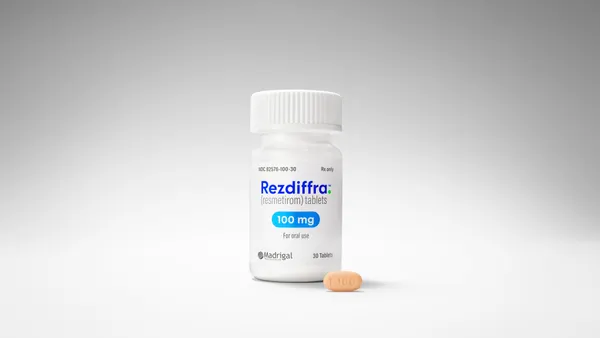As pharmaceutical, biotechnology, and medical-device companies look to realize cost-efficiencies across the board to meet the demands of the current fiscal crisis, they should evaluate the consequences of budget cuts and staff attrition as they reorganize their clinical departments. While some amount of downsizing may be inevitable, sponsors need to engage in meaningful partnerships that encourage a culture of innovation and allow for maximum flexibility. There is no doubt that the economic climate is compounding the challenges inherent to drug development, which is already fraught with risk, burdened by spiraling costs, and hampered by long timelines. Recent data show, however, that a drive toward innovation remains strong — as it should in good times or bad. Investment in pharmaceutical research and development needs to continue; life-saving drugs are vitally important to the future of the industry and more importantly to the patients who are in need of novel therapies. Maintaining a Culture of Innovation According to analysis by the Pharmaceutical Research and Manufacturers of America (PhRMA) and Burrill & Company, despite the nation’s economic slowdown, America’s pharmaceutical research and biotechnology companies invested $65.2 billion last year in the research and development of new life-changing medicines and vaccines; this investment was not only a record but an increase of about $2 billion from 2007. Furthermore, PhRMA-member companies alone invested an estimated $50.3 billion in pharmaceutical R&D last year, up from $47.9 billion in 2007, according to the PhRMA survey. Additionally, analysis from Burrill shows that non-PhRMA pharmaceutical research companies spent another $14.9 billion on R&D last year. And since no one has really come up with a good reason that drug development should actually stop, sponsor companies and their CRO partners need to find ways to control costs without stifling innovation. According to recent PhRMA estimates, there are more than 2,900 medicines in development in the United States, including 750 compounds for cancer, 312 for heart disease and stroke, 150 for diabetes, 109 for HIV/AIDS, and 91 for Alzheimer’s disease and dementia. Diseases continue to exist and proliferate; the recent swine flu scare is a perfect example. Whether in a good or bad economy, there is really no question if drug development should continue — it has to. Population increases and global travel movements lead to the spread of disease, faster and with greater impact, which in a sense makes the industry almost self-propelling. Developing Meaningful Partnerships The economy will eventually rebound, and that can happen quickly. Companies that become too lean in terms of headcount, may not be able to compete if they do not have the right resources in place. They need properly trained clinical staff members ready to do the work. While most experts agree that making R&D units bigger does not make them more efficient, however, a record investment in R&D also means record levels of clinical testing of new medicines. The recent spate of mergers and acquisitions will continue to redefine the clinical landscape as the newly formed entities look to reduce redundancies and improve the output from their lackluster pipelines. Additionally, new R&D models that resemble those of biotech companies are being tested. Companies such as Pfizer and GlaxoSmithKline already have announced major changes to their structures, and are organizing into smaller discovery units. Global financial events are also having their impact on clinical staffing numbers. R&D units, like other functional areas, are not immune to downsizing and restructuring; news of layoffs affecting clinical departments in both large and small pharmaceutical companies continue to make headlines. Unfortunately, staff reductions and attrition, will no doubt continue but this is the last place sponsor companies should make cuts to reduce costs. People are the direct resource by which research is conducted and discoveries are made. If sponsor companies and their CRO partners don’t employ great minds, the results won’t matter. Today, clinical managers had better know the day-to-day, on-the-ground, actual activities of clinical trials so they can make faster, smarter decisions. Staff members who are in direct contact with patients and protocols need to understand how their actions affect the entire trial. Clinical trial operations require intelligent people; these are serious times that require serious people doing serious work. Technology is often lauded as the silver bullet when talk turns to improving efficiencies and reducing costs, but employing the hottest, most innovative technologies is a case of clever misdirection — a pencil still writes as good as a pen if the person using it knows what to say. It’s only by properly training clinical staff members on the appropriate use of the technology and empowering these research professionals to make decisions based on the resulting data, that organizations can actually reduce costs by speeding up the evaluation process. Technology allows for the accrual of data more quickly and that information can be disseminated downline more rapidly, or better even, in real time. All of this means that more informed decisions can be made about protocols, appropriate regions, sites, patient recruitment — just a few of the factors that when combined embody a highly complex study process. The fruits of technology’s labors can only come to bear when staff members are well-trained and are allowed to make informed decisions based trusted results. Efficiencies are a result of people, not the technologies, that a company cultivates. Evaluating Costs vs. Results Sponsor companies need to find the right balance between reducing costs and maintaining opportunities. By cutting back so drastically on their clinical budgets and cutting key staff, they actually pass up development and marketing opportunities, because they are unwilling to adequately fund projects to realize profit-making results. The irony is that even with budget and staff cuts, sponsors still hope for the big results based on the quality of work that larger budgets supporting experienced people provide. This is a simplistic strategy that is unrealistic and, ultimately, unsustainable. CEOs need to make real investments in their internal operations that provide real value-added opportunities and clinical partnerships that provide efficient services. Sponsor companies that partner with CROs that are set up to provide full-service and a la carte functional choices enjoy greater flexibility. This means they can put more high-return dollars toward R&D, instead of spending low-return dollars on functions that a full-service and flexible CRO can provide more efficiently. This is a perfect example of how not to reinvent the wheel in house, but to use outsourced services. CROs are poised to be the best ancillary arms for clinical research functions; they already have the existing expertise. Out of the Ashes True progress in R&D isn’t a short-term proposition; true innovation is only realized in the long term. People and companies must be aware that focusing solely on short-term strategies may result in long-term losses. A good mix can mean the difference between survival and prosperity. If the industry creates a sustained research business climate, prosperity will grow out from the center of the current economic strife. But R&D spending must tighten up and the targets of development must be more precise; R&D companies and their CRO partners must collaborate in more up-front discovery; and they must employ better ROI scenarios and make smarter decisions. The industry is on the verge of great scientific discoveries, as it has always been in good times and bad. Progress in pharmaceutical discovery and development has been a constant backdrop to all scientific success even the tightest economies. During the 1930s — in the middle of the Great Depression — two major vaccines were developed and disseminated: one for yellow fever in 1932 and one for typhus in 1937. Today, patients remain the happy recipients of the discoveries made by the pharmaceutical companies and the captains of industry who chose to spend on innovation and clinical development, in spite of the drastic economic issues of their day. Let’s hope this same intrepid spirit carries us through now and in the future. Those were particularly bad times. Thankfully, we are no where near those epic proportions today. n Criterium Inc. Maintaining Clinical Operations in a Downward Economy: It’s Just Good Business Sponsors need to engage in meaningful partnerships that encourage a culture of innovation and allow for maximum flexibility. Lawrence Reiter, Ph.D. Director of Global Affairs Clinical trial operations require intelligent people; these are serious times that require serious people doing serious work. Criterium Inc. is a global, full-service, and technology-driven contract research organization that offers a unique mix of high-quality, innovative clinical research solutions for the biopharmaceutical, pharmaceutical, medical device, and CRO industries. For more information, visit criteriuminc.com.
An article from


Maintaining Clinical Operations in a Downward Economy: It's Just Good Business
Filed Under:
Research & Development









